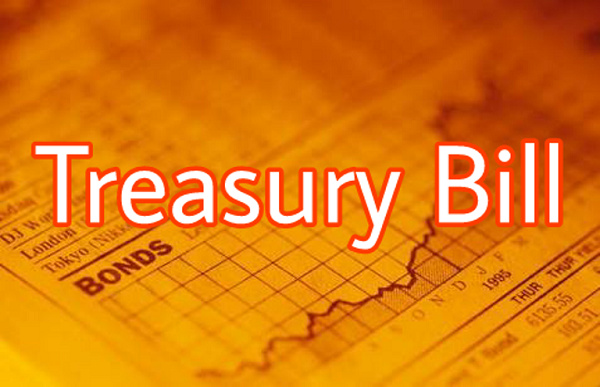Treasury yields tipped to tumble 500 basis points with IMF deal

Optimism over the deal has received a significant boost following the formation of an Official Creditor Committee – led by China and France – by the Paris Club.
Yields on the Treasury market instruments are expected to drop to between 15 percent and 18 percent by the end of quarter-three-2023 if the US$3billion facility is approved and disbursements begin at the midway point of 2023.
“We see Treasury yields hovering around 20 percent to 25 percent in the near-term. If government can secure an IMF executive board approval by the end of Q2-2023, we expect yields on Treasury bills to drop significantly – between the range of 15 percent and 18 percent – by the end of Q3-2023,” Apakan Securities mentioned in its first quarter 2023 review of the market.
“Yields on Treasury bills will continue to fluctuate in the near-term, with more upside potential. However, the real return on Treasury bills will remain negative until inflation returns to a single digit or drops below 20 percent,” it added.
However, inflation has dropped for the fourth consecutive month to 41.2 percent in April this year; down from 45 percent the previous month. The rate peaked at 54.1 percent in December 2022 and has since been gradually slowing down, the pace of which has prompted expectations that it could reduce to under 30 percent by close of the year.
Earlier, in first-quarter of the year, Treasury yields tumbled following government’s cost-reduction strategy amid strong demand. As Treasury yields escalated to unsustainable levels on the back of tighter financing options for government, the Treasury capitalised on the strong demand for bills to trim-off bids toward the end of quarter-one – readjusting its cost of borrowing downward.
As a result, yields on the 91-day bill decreased from 35.36 percent in the fourth quarter of 2022 to 19.39 percent in the first quarter of 2023; while yield on the 182-day bill decreased from 35.98 percent in the fourth quarter of 2022 to 21.44 percent in the first quarter of 2023. Likewise, the yield on 364-day bills dropped from 35.89 percent in the fourth quarter of 2022 to 25.66 percent in the first quarter of 2023.
Recent auction results highlight a consistent oversubscription of Treasury bills for the sixth consecutive week as at end of the last two weeks. Notably, the 91-day bill experienced a 31-basis-point increase – reaching 20.26 percent, while the 182-day bill rose by 12 basis points to 22.83 percent. Similarly, the 364-day bill inched up by 10 basis points to 27.36 percent.
Sharing his thoughts on the subject with the B&FT, Economist and Research Lead at GCB Capital, Courage Kwesi Boti said: “We could end the year with a 91-day rate of 17 percent or slightly lower. Inflation is still very high and I am looking at an end-of-year rate of around 25 percent, which means we would not restore positive real returns by then; but I feel that for government to realise gains from the Domestic Debt Exchange Programme (DDEP) properly, it will have to price T-Bills significantly below the levels where they are now”.
This comes as the average coupon on the bonds that were exchanged for new ones during the exchange was 19 percent, and after the swap it has fallen to an average of 9.1 percent.
“For T-bills to be anything above that 9.1 percent, then we would not be making any savings: but I also accept that there is a limitation to how low it can come, given where inflation is and the risk that is associated with the sovereign. The start of the IMF programme should bring about reduced reliance on short-term borrowing, as there will be funds; and it will also unlock other concessional financings,” he further stated.
In the first quarter of 2023, there was a significant increase in demand for Treasury bills as investors found their yields attractive and alternative investment opportunities were limited. Moreover, the bills were exempt from the DDEP.
The amount of investment tendered by investors rose by 60 percent quarter-over-quarter (q/q) to GH¢39billion, reflecting the heightened demand for Treasury bills. To cover a gross maturing face value of GH¢24billion due across all the tenors, the Treasury sold a total of GH¢36billion. Furthermore, the Treasury’s auction target increased by 43 percent q/q to GH¢28billion in the first quarter of 2023 from GH¢19.66billion in the preceding quarter.





